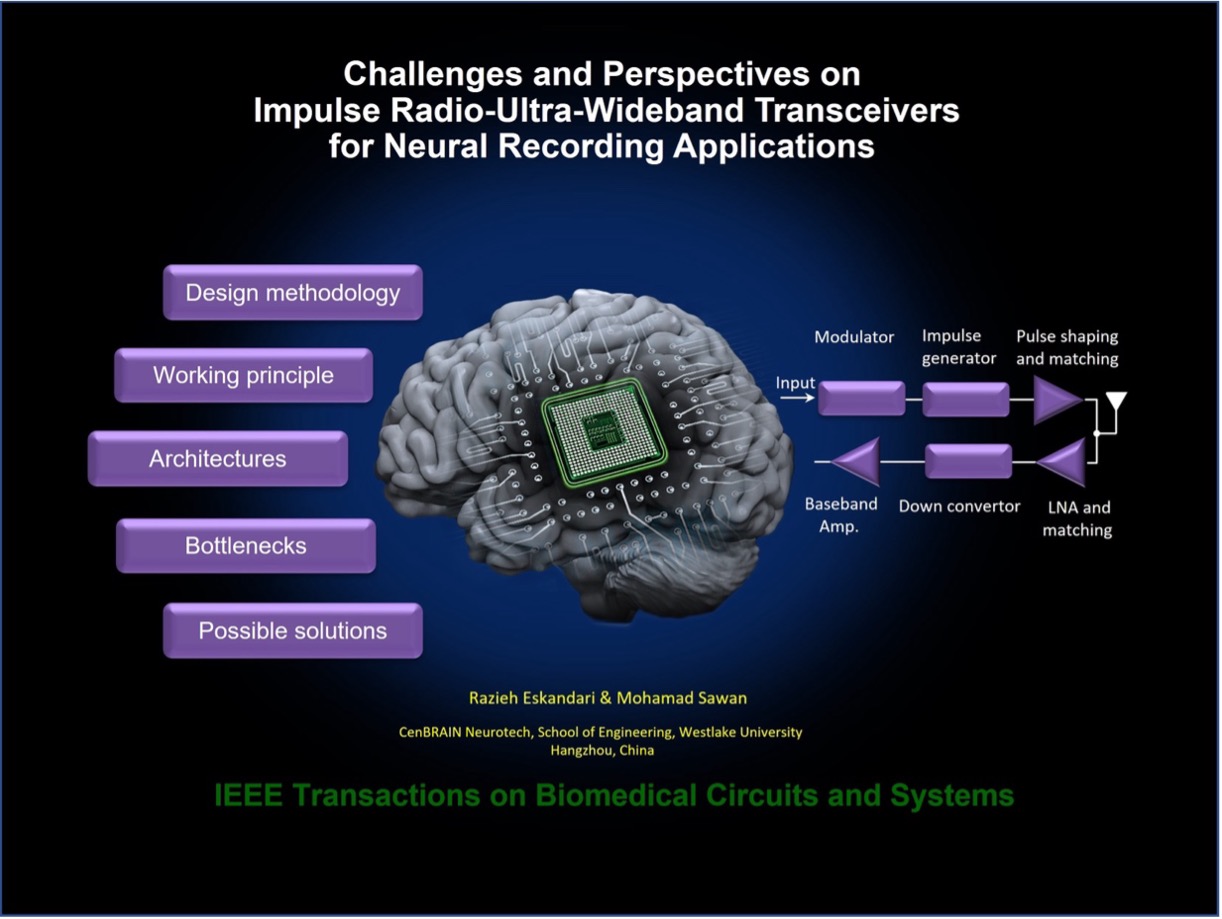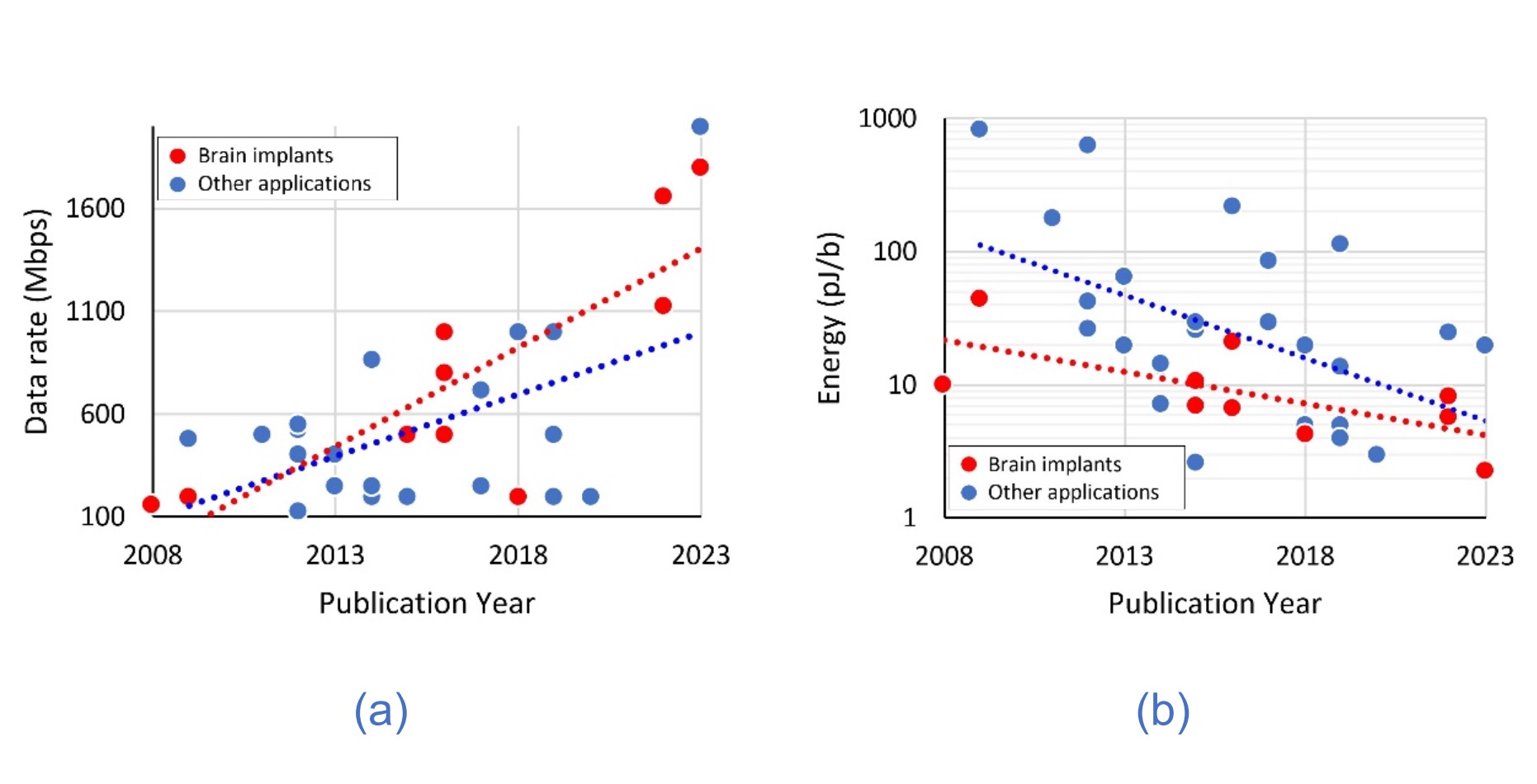This contribution is a review manuscript which has been published in the IEEE Transactions on Biomedical Circuits and Systems (IEEE TBioCAS), the most prestigious journal in the field. In this article, we have analyzed various implementation techniques for IR-UWB transceivers to identify the bottleneck of each architecture.
Congratulations to Dr. Razieh Eskandari and to Prof. Mohamad Sawan for this contribution.

Reference:
R. Eskandari and M. Sawan, "Challenges and Perspectives on Impulse Radio-Ultra-Wideband Transceivers for Neural Recording Applications," in IEEE Transactions on Biomedical Circuits and Systems, vol. 18, no. 2, pp. 369-382, April 2024, doi: 10.1109/TBCAS.2023.3331049.
More information can be found at the following link:
https://ieeexplore.ieee.org/document/10313018
Abstract:
Brain-machine interfaces (BMI) are widely adopted in neuroscience investigations and neural prosthetics, with sensing channel counts constantly increasing. These Investigations place increasing demands for high data rates and low-power implantable devices despite high tissue losses. The increasing demand for low-power and short-range wireless communications has led to the development of several narrowband solutions, such as IEEE 802.15.4, Bluetooth Low Energy, and Medical Device Radio Communications Service. Despite their low power performance and low tissue losses, these radios are unlikely to satisfy the constraints of upcoming multi-brain-machine interfaces with thousands of recording channels, including small areas, severe power budget, heat dissipation, and high data rates. IR-UWB solutions, which offer a wide transmission bandwidth and high energy efficiency, are good candidates for achieving higher data throughput.
IR-UWB transceivers show great potential for improving the functionality and performance of multi-channel BMIs. The primary challenges faced by multi-channel BMIs are the stringent requirements for high data rates and ultra-low power consumption. The IR-UWB transceivers, with high energy efficiency, flexible data rate, and simple architecture, have emerged as a promising technology for brain implants. In this overview article, we have analyzed various implementation techniques for IR-UWB transceivers to identify the bottleneck of each architecture. An in-depth study on high data throughput transceivers concludes that all-digital design methodologies are more appropriate for ultra-low power applications, while hybrid modulation techniques combining various modulation schemes can achieve data rates exceeding Gbps. We believe that compatibility with energy harvesting designs and extending communication distance with a restricted power budget define the future challenges for IR-UWB transceivers for neural recording implants.

Figure 1. Tracking the Evolution of a) Data Rate, and b) Energy Consumption in high-throughput IR-UWB transceivers for brain implants vs. other applications over the last 15 years.